Aviation
My jet is bigger than yours
Published
1 year agoon
By
Olu Emmanuel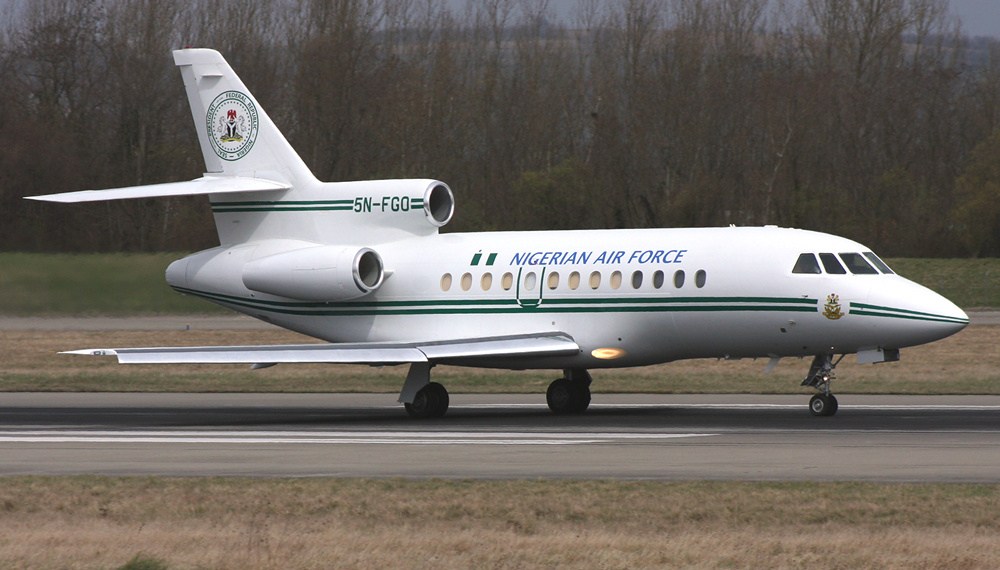
By Chidi Amuta
In 1989, the call of duty and pull of family necessitated that I travel from my London partial base to New York. I was checked in on a British Airways flight from London to New York. We were set to leave Heathrow shortly after the usual pre-departure rituals.
I was seated on an aisle seat on row 2 in the First Class cabin courtesy of my employers then. I noticed that on both sides of the aisle in my front, the two seats on each row were unoccupied. It was a bit curious. I reckoned it was either a VIP reservation or there would be air Marshals on board. But marshals do not occupy prominent front row seats on aircraft they are protecting. Those were the days when it had become mandatory for major Western airlines on international routes to have armed Marshals on board in the event of terrorist hijack attempts.
As the pre- departure announcement was about to commence, the four ‘missing’ First Class passengers boarded. I looked up. There was a stately lady accompanied by three smart- suited gentlemen. They allowed the lady to take her seat before they sat down in a manner that flanked the lady in a window seat on the left side of the aisle. Before the lady took her seat, she courtsied and flashed a brief plastic smile at those of us seated immediately behind her with a hardly audible “Good afternoon”.
On came the Captain’s voice: “Honorable Prime Minister and valued guests, welcome to this British Airways intercontinental service taking us straight to New York’s Kennedy Airport….Flight time is… En route weather…Mild turbulence on the Atlantic crossing….”
The female last minute passenger was none other than the then British Prime Minister, Mrs. Margaret Thatcher. That was her penultimate year in office. She was flying a commercial airline as a passenger to New York, obviously en route Washington.
On arrival in New York, Mrs. Thatcher courteously disembarked, accompanied by her three self -effacing security escorts. They just disappeared through the crowd followed by the rest of us passengers. No limousines at the foot of the aircraft. No long assault rifles, horsewhips, combat gear and orchestrated commotion. etc.
As Chairman of the Editorial Board of the renascent Daily Times under Dr. Yemi Ogunbiyi, I went to Harare to interview President Robert Mugabe in 1992. He was scheduled for a state visit to Nigeria on President Ibrahim Babangida’s invitation. I flew to Harare via Nairobi on what used to be Balkan (Bulgarian) Airlines. After my interview, Mugabe kindly asked me how I was returning to Lagos. I told him. Then he politely offered me a seat in his jet: ‘ we have a large plane and can offer you a seat.’
The next day, I showed up at the airport. After the president’s ceremonial departure rituals, his aides took me on board the aircraft and got me seated. It was an Air Zimbabwe Boeing 727 with clear commercial livery. The crew were Air Zimbabwe pilots, cabin crew and co-pilots. The president was proudly flying a commercial aircraft and was proud of it. As soon as we reached cruising altitude, the president walked round the cabin for courtesy chats. He stopped by me to express delight that I accepted his offer of a ride. He told me Nigeria trained most of their combat pilots prior to independence.
I provide these anecdotal experiences against the backdrop of a simulated debate that is brewing in the country. A few voices have been raised in the National Assembly in support of buying two new aircraft for the presidential fleet to replace the current aircraft. If the kite flies, the President and the Vice President respectively would jet around the world in brand new luxury jets. To all intents and purposes, the aim of the brewing noises in the NASS is to give legislative legitimacy to a decision that may already have been made. I am not sure whether there is any provision in the 2024 budget for these aircraft or the idea is just a whiff of presidential wish that needs some legislative stamp. It is too early to tell but clearly, the matter of new presidential jets is on the table of public debate.
Nigeria’s Presidential Jet
Those who are pushing this agenda have cited recent hiccups in the performance of the jets in use. When the president recently travelled to the Netherlands on an official visit, his follow -on trip to Saudi Arabia for the World Economic Forum had to be undertaken in a hired aircraft as the presidential jet reportedly developed problems in Amsterdam. Shortly after that, Mr. Shettima who was headed for the United States to represent Nigeria at a major foreign policy event reportedly had to make an air return early in the flight as his own aircraft also reportedly developed a fault mid air. The conclusion is that these aircraft are either too old or poorly maintained to be trusted to ferry the two first citizens around safely. Whatever the political nuisance value of our first two citizens, we want them alive and safe.
The matter of safety of high level aircraft in use by heads of government has been elevated by two recent air accidents that claimed the lives of incumbent high level government officials. The first was the helicopter crash in the mountains of northern Iran that claimed the life of the Iranian president, Mr. Raisi. The second is the incident that claimed the life of Malawi’s Vice President, Saulos Chilima. In the absence of detailed accident investigation reports on both incidents so far, the easy conclusion has been that faulty aircraft may be the prime causes of these unfortunate events. The lazy and convenient conclusion is of course that the only way to get presidents and their deputies to arrive their destinations in one piece is to equip them with brand new aircraft. The Nigerian purveyors of this lazy option have spared no time for possibilities of weather, sabotage, bad maintenance or indeed human error.
Consequently, those advocating the purchase of new aircraft for Tinubu and Shettima have tacitly accused opponents of the huge expenditure on new aircraft of wishing our president and his deputy dead if they continue flying in the old aircraft.
Irrespective of such morbid thinking, opponents of the purchase of new presidential jets are predicating their contention on purely socio economic reasons. The self evident argument is that the purchase of new presidential jets cannot qualify as a priority given the sorry state of the national economy and the avalanche of problems and hardships that Nigerians are currently living with. The facts are self -evident.
The nation is in a poor shape. Hunger and poverty are too prevalent. Everyone is unsafe as swarms of bandits and casual killers are all over the place taking lives and inflicting harm sometimes for the fun of it. Healthcare is beyond reach as the prices of essential drugs and medications have shot through the roof. The state itself has its back on the wall as most economic indicators –inflation, exchange rate, interest rates, unemployment, foreign investment etc- are all flashing red. The matter of new presidential jets in those circumstances becomes a matter of deficient prioritization. Why would we prioritize the procurement of luxury jets when the vast majority of our people are in desperate deprivation while the government is preaching sacrifice and imposing a battery of inexcusable taxes of everyone for the most essential service and public goods?
The political opposition has weighed down heavily on even the mere suggestion that any government of Nigeria in these circumstances would even dream of additional luxury jets for Tinubu and Shettima in these times. Justifiably, the opposition has pointed at recent instances of unnecessary luxurious indulgence by the administration in the 2024 budget. They point at the purchase of countless expensive luxury SUVs for legislators and high government officials, the contentious presidential yacht, the expensive new habitations for the Vice President, the expensive refurbishment of official residences and offices of the already over indulged executives etc. The obvious conclusion is of course that a government that can prioritize unnecessary items of luxury at huge costs while the people wallow in poverty and extreme deprivation can only be insensitive and callously indifferent.
Yet the transportation of Presidents, Vice Presidents and other key officials of state have become part of the architecture of the modern nation state. The Presidential jet in particular has become an emblem of national prestige and status. In some ways, the size, functionality and opulence of a country’s presidential jet has become an unstated indicator of the diplomatic gravity of the nation in question. However, the presidential jet as an indicator of national strength and grandeur is more meaningful when the nation in question is an industrial power and therefore produces the aircraft used by the leader to project and exhibit national power and greatness. America’s Air Force One, Vladimir Putin’s clone of the American model or Mr. Tsi Jiping’s aircraft or that of Narendra Modi have all become emblems of the greatness and technological advancement of these countries.
As a matter of fact, Air Force One is not a badge name permanently affixed to any one aircraft. It is merely a call sign. Any aircraft in which the US President is travelling at any given time is called Air Force One! The customized Boeing 747 normally associated with the Air Force One label is merely an emblematic showpiece. It is not only one. There are more than one with the same specifications, outfitting, self-protection counter measures and communication gear such that the president of the United States can literally run his country and the world from the aircraft anywhere in the world.
On the basis of its stature as the biggest black nation in the world, the Nigerian president should not travel in dilapidated aircraft that park up at every stop. Minimally, our presidential aircraft should be air worthy and reasonably impressive without being ostentatious. The current aircraft in use is a modest Boeing 737 Executive jet that actually understates Nigeria’s stature. Any two penny American company Chief Executive owns or flies in something better and more impressive. We should do better. But the time is wrong to even contemplate a fleet of new aircraft. It is not just enough to purchase one aircraft each for the President and Vice President respectively. Ideally the shopping list ought to be for at least two – a main and a back up – for each of them. But we cannot afford these now.
There are options that could be cost saving. The first is to fly the present Boeing 737 Business jet in use by the President back to the Boeing factory in Seattle, Washington for a thorough comprehensive factory overhaul. That would be less expensive than ordering a brand new custom made aircraft. The overhauled and updated aircraft should serve our president another couple of years while the pressing issues in the nation’s economy are hopefully fixed. The amount of savings made on such an overhaul alternative should be made public.
A more realistic, politically savvy option would be to hire one of Air Peace’s Boeing 777 long range aircraft each time the president has to make a long distance journey. For the purpose of such a hire, the hired aircraft will carry the call sign of “Nigerian Air Force One” till it finishes the mission. For the purpose of such an arrangement, the Nigerian Air Force should have a presence in the cockpit of the aircraft in question. This arrangement would be realistic, cost effective and patriotic. The political capital would complement the economic gains and give the president a win-win dividend at home where his popularity rating is at best abysmal.
If reason fails, the Kamikaze option would be the one that is already being rehearsed. Get National Assembly approval for new jets, submit a supplementary budget to accommodate the cost of these new jets, order the aircraft but continue to hire or travel by commercial aircraft till the new jets are delivered. There will be both turbulent headwinds and violent tailwinds with this option. But for a government that can withdraw fuel subsidy, devalue the Naira, revert to the old national anthem overnight and sign the N18 trillion Lagos- Calabar Alaskan highway contract and damn the consequences, mere controversy over aircraft purchase may just be a passing noise. Heavens will not fall, so their thinking at the Villa goes. But what if Nigeria falls apart?
Trending
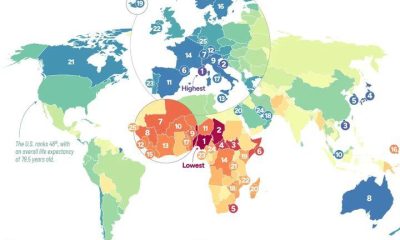
 Comments and Issues7 days ago
Comments and Issues7 days agoNigeria’s Life Expectancy as World’s Lowest

 Health1 week ago
Health1 week agoFDA expands probe into COVID-19 vaccine-linked deaths
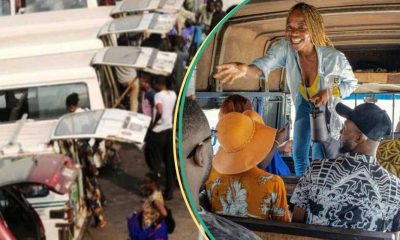
 Latest6 days ago
Latest6 days agoChristmas rush triggers surge in transport fares from Lagos to South-East
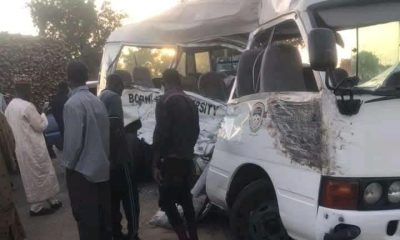
 Latest1 week ago
Latest1 week agoEight UNIJOS students, driver killed as trailer crashes into bus

 News1 week ago
News1 week agoFoundation commemorates 10th anniversary set to lift Edo indigents economy
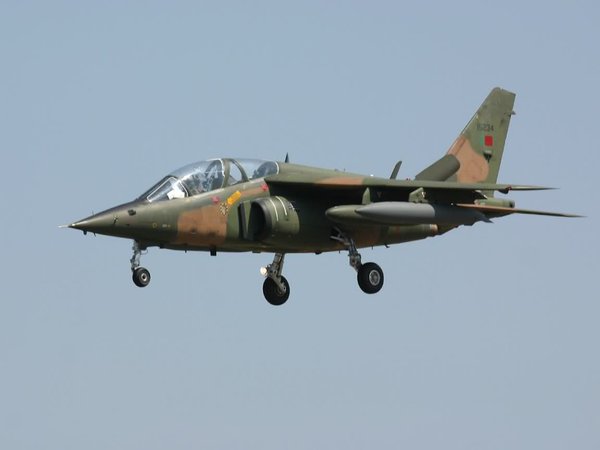
 Comments and Issues1 week ago
Comments and Issues1 week agoProtecting A Neighbor While Failing Nigerians: A Misplaced Priority?
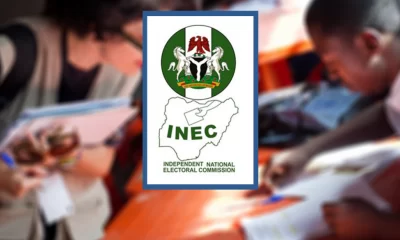
 Uncategorized5 days ago
Uncategorized5 days agoCVR: INEC records 139,251 applications in Lagos

 Labour1 week ago
Labour1 week agoPolice debunk viral video claiming officer caught stealing, arrests 13 for assault

